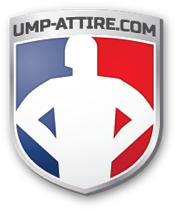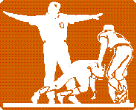 |
|||||||||||||||||||||||||||||||||||||||||||||||||||||||||||||||||||||||||||||||||||||||||||||||||||||||||||||||||||||||||||||||||||||
|
|||||||||||||||||||||||||||||||||||||||||||||||||||||||||||||||||||||||||||||||||||||||||||||||||||||||||||||||||||||||||||||||||||||
|
|
Umpire Education
What is Umpiring? Umpiring is preparation, reading and then reacting to a situation for each umpire causing the umpire to move to a position to cover their area of responsibility. Then be set to make a call on a situation. Coverage is based on the most likely play to happen next. Umpires should not react to unlikely second or third play developments. Thus good umpires will do the following:
Go look in the mirror and be honest with yourself – were you a “good umpire” for that game. What can you do better next game? We are only as good as our last call. Get noticed for the right reasons. If you end up on YouTube make sure you look good. Unwritten Laws of Umpiring: As an Umpire...
Ways to Get Noticed for the Wrong Reason; Recently an umpire showed up to the home plate pregame meeting with the coaches with hat on backwards and a cup of coffee. Ummm, NO! What impression do you think the coach had of that umpire? At another game this season a coach sent an email to Gary, "the umpires seemed like they were unsure on how to handle or umpire a Varsity game." I don't know what actions and/or comments were made, but every game, at every level, needs to be handled in a professional manner as we have talked about in the meetings, clinics, and past emails. Get your partner's back. If your partner is about to do something wrong, such as carry a coffee mug onto the field, smoking in the parking lot, not wearing the proper NCOA hat, etc, tell him/her that it is NOT acceptable. The way an umpire presents him/herself before, during and after a game goes a long way toward managing conflict. Simply put, you’ve got to look like you know what you’re doing and look confident while handling situations. An umpire with presence projects an aura of confidence, not arrogance. Commands respect through stature and demeanor rather than demanding respect. Looks athletic with comfortable, fluid mannerisms. Positive body language. Movement is brisk and purposeful – not overly deliberate. Keeps head up. Composed. Coaches and players can sense nervousness and may become aggressive, thinking they can easily influence an umpire and gain an advantage. Younger umpires should be prepared to deal with more conflict than an older umpire. Coaches tend to test rookies because there’s a perception that they are more easily influenced than veterans. Ways to improve your presence:
Pace of Game Items: A game with rhythm and flow is more enjoyable to watch and umpire then no flow. Also, you don't get paid by the hour to umpire, you get paid by the game. Here are some things we umpires can do to keep the pace of play going when umpiring:
These are things we are doing in college baseball to keep the pace of the game flowing. Games with no pace are boring and tend to take longer then they should. Pregames With Partner: Upon arrival at the site, stop the BSing and have a pregame with your partner. I don't care how many times you have worked with him/her, conduct a pregame. Get your "team" ready for the game, and be the best team on the field. If you disagree with a mechanic or coverage item the NCOA handbook takes precedence. When conducting a pre-game with your partner, do not just go "same old stuff? -OK" to your partner. I know some of you have worked together so many times you can read each other's minds. If such is the case, then talk about strange or wierd situations you had lately and how to better cover them. Other wise cover the four basic components of the game:
To keep your focus on the game during the game, remind yourself what YOU are going to do on each of the first three items above. Do this before each new batter, change in runner positions during that batter and/or after every third pitch. Timing:Timing is proper use of your eyes to see the all the crucial elements of the play and then make a decision based on the information observed. When calling balls/strikes strive for consistent timing so the players know when to expect the ball or strike call. Track the ball into the catcher’s glove with your eyes, let the brain process it, then render your decision. Buy time on easy pitches to call so when you have a tough one on the corner or at the knees you can take that bought time to make your decision and no one will notice the difference. When the plate umpire’s timing is too fast it leaves him/her susceptible to hasty decisions. (Read that to say wrong calls.) Timing that is too slow can make one appear indecisive. Timing that is inconsistent will bring undue attention as people take notice to a break in rhythm. When making a call on the bases, including fourth base (home), umpires will make the out call when the fielder shows voluntary release of the ball or the player starts a new act while still holding the ball in his glove. A safe call should be made when it is clear the runner is safe with no potential of being out due to further action on that one play (i.e. oversliding). See the whole play before rendering your decision. Some plays may need more time to rule on in order to see all the crucial elements of the play. Covering Primary Play First: Always cover the primary play that is occurring that you are responsible for first. Work to get angles on that play. Secondary plays will be covered after that primary play is done. Too many umpires are moving away from the primary play worried about what else might occur. Only exception to the above is a routine double play ball in the infield. Yes you will be moving away from second base, moving towards first getting an angle on the play at first because chances are that will be the tougher call. If the play at second breaks down, move back towards second. Arguments and Ejections: If a coach or player make a statement or action that does not warrant an immediate ejection issue a “warning” first. Make sure you use the words “this is a waring...if you continue to argue or make statements about ... you will be ejected.” If the coach or player does not stop you have grounds for ejection. When submitting the ejection report please be specific with what was said or done. Also state that you issued a warning. A statement like, “the coach threw a tantrum” is not specific. If any cuss words were used, please include them in the ejection report. A phone call to David or Gary is required after the game and ejection reports are to be submitted online before going to bed that evening. Ejection reports are needed to advise the school so the coach or player does not participate in the next contest. Moving to get Angles: When a play is developing move first to get angle rather than moving to get close to the play. Once you have angle and you have time, then work on moving closer to the play. Don't just stand in one spot to make calls on the bases. You have to move towards the play (angle first) to get a better picture of the play in order to improve your judgment. Many times the play will be easy. It is those few close calls that you need to have the angle to make the correct call. So practice getting angles on the easy ones so it becomes second nature thus making the tough calls easy. Examples:
Plate Umpire Moving: When the ball is put in play the plate umpire becomes a base umpire. Plate Umpire usually has home and third base. Here are some items of movement for the plate umpire:
Catches: If you have responsibility for the catch - stay with the catch! Do not worry about the runners unless you can put the runners in your peripheral view. The umpire not responsible for the catch will watch runners tag up or touch bases with the primary base being third, then second, then first. This is called division of labor. We don’t need both umpires watching the fly ball/catch. On a trouble ball if you are not responsible for the catch you can assist your partner, but know that he is primarily responsible for the catch. Our Enemy - the Ball: The ball is usually the root of all our problems so it is an enemy. When an enemy is present and live you must be alert, attentive and keep your eyes on the ball most of the time. Only when the enemy is dead can we relax a little bit. Always know the status of the ball - live or dead. When it is live things can happen. There are times we need to take our eyes off the ball - watching runners touch bases - but then we must pick up where the ball is. Keep the ball in front of you. You should never have your back to the ball, except when making the pivot at first on a base hit while watching the batter-runner tough first. Then turn to pick up the status of the ball as it comes into the infield. When working inside the diamond keep the front of your torso within a 90 degree viewing angle on the ball. In other words, you might be moving to get an angle on the play with your body turned toward the potential play but your eyes are still on the fielder with the ball until he/she throws it. Any time the ball is dead - it must be brought back alive by the plate umpire at the appropriate time. Top
|
||||||||||||||||||||||||||||||||||||||||||||||||||||||||||||||||||||||||||||||||||||||||||||||||||||||||||||||||||||||||||||||||||||





 elp your assigners out and make your crew and the association look good by...
elp your assigners out and make your crew and the association look good by...